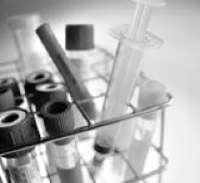 Checking fasting for several hours before blood lipids is a well-known note for the general public, but recent observations point out that fasting patients for hours before going for blood lipids will quickly become a thing of the past.
Checking fasting for several hours before blood lipids is a well-known note for the general public, but recent observations point out that fasting patients for hours before going for blood lipids will quickly become a thing of the past. Although the current guidelines recommend that doctors only test lipids and lipid subtypes after an average patient has been fasting for more than eight hours, a study published online November 12, 2012 in the Journal of Internal Medicine found that patients may no longer need an empty stomach. The study found that there was little difference between fasting and non-fasting blood lipid levels.
Dr. J Michael Gaziano, Brigham and Women's Hospital, Boston, Mass. [Arch Intern Med. 2012. Pdf] pointed out: "The incremental benefit of fasting numerical information on total lipids and high-density lipoprotein cholesterol is very small and does not seem to offset the logic that imposes such burden on our patients, laboratories, and providing timely counseling for patients. It seems that this (to the doctor) is more inclined to rely on non-fasting blood lipids as the preferred check."
Two other doctors, AmitKhera and SaminaMora, also agreed with this view. They wrote in the second editorial that due to the current lack of evidence that fasting lipid testing is a priority test, non-fasting blood lipids are considered for most patients who visit daily. It is logical.
The authors of the study, Dr. Davinder Sidhu and Dr. ChristoPHer Naugler of the University of Calgary, Canada, stated that previous studies have also shown that the results of measuring some lipid subclasses in patients without fasting are acceptable, and in some cases, even favorable results because some Non-fasting indicators are better predictors of predicting future cardiovascular events. However, most studies have a limitation that they only study patients in a specific group. Therefore, large-scale studies to explore the relationship between fasting times and blood lipid levels in non-specialized populations are necessary.
The authors designed a cross-sectional study based on a large population and analyzed laboratory data to explore the relationship between fasting duration and blood lipid levels.
From April 1st to September 30th, 2011, they used secondary data from the Calgary Laboratory and examined the results of each patient's examination with lipid profiles.
A policy change in 2011 allowed the laboratory to directly test samples used to determine fasting lipids regardless of fasting time.
Fasting time ranges from 1 to 16 hours. The lipid results included the average levels of high-density lipoprotein cholesterol, low-density lipoprotein cholesterol, total cholesterol, and triglyceride. A total of 209,180 patients were included in the study. The authors constructed a linear regression model to predict the average cholesterol level at each different fasting time.
The study found that the difference in total and high-density lipoprotein cholesterol levels was less than 2% in patients with different fasting times, and the variation in low-density lipoprotein cholesterol levels was calculated to be less than 10%, and the variation in triglyceride levels was 20%. For cholesterol subclass levels, there is a statistically significant difference only for a small fraction of fasting intervals.
Gaziano stressed in his editorial that although in some cases fasting values ​​may be useful, it is likely to be unnecessary at most times. He also wrote that, but the study is not without limitation. This study assumes that the time of the blood test did not introduce any systematic bias... and no information about the medication was collected and repeated measurements were taken. More data grouped by age may be more useful.
The authors believe that other limitations include not investigating each individual's pre-existing diet or controlling the recall error of individuals reporting their fasting time. The authors suggest that further studies should be repeated for the same patient at different fasting times.
Medical Anti-reflux Tower For Luxury Drainage Bag
Luxury drainage Bag for urology is connected to the catheter to allow for the collection of urine. If you are using a foley catheter then you can use one of these bags in order to maintain a healthy, active lifestyle. It is a disposable medical graded consumables.
Medical anti-reflux tower, a rigid spare part for luxury draiange bag, is a disposable medical grade consumables. The material for anti-reflux tower is PVC, PP and ABS.
Medical Anti-reflux Tower for Luxury Drainage Bag is a spare part for luxury medical drainage bag, which is a medical consumables. Drainage Bag is a disposable medical consumables as well, which meant anti-reflux is a disposable medical consumables as well. Medical anti-reflux tower's material is medical grade PVC, PP or ABS. The anti-reflux towers are solid, rigid and high quality.
Medical Drainage Bag,Medical Spare Parts,Anti-reflux Tower,Drainage Bag Parts,Anti-reflux Tower for Drainage Bag,Drainage Bag,Medical Consumables
Huali Technology Co., Ltd , https://www.jlhualitech.com